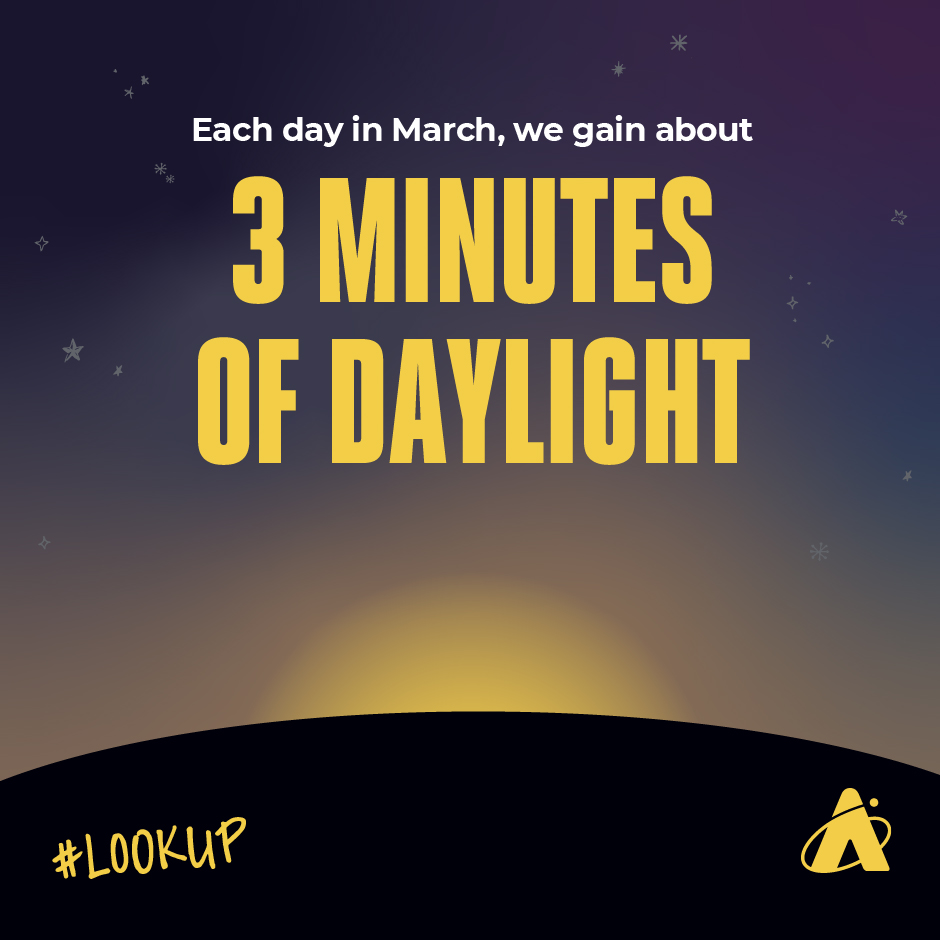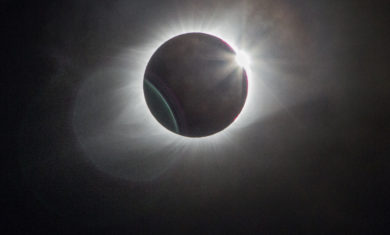Adler Skywatch: March 2020

The three naked-eye-visible planets outside Earth’s orbit will appear less than 20 degrees apart in the sky this month, March 2020.
The planets Mars, Jupiter, and Saturn can be seen low in the southeast just as morning-twilight begins to lighten the sky. Jupiter is the brightest of the three, and it serves as a guidepost to spot the other two planets. Throughout the month Saturn is roughly six to eight degrees to the left and slightly below Jupiter. The planet Mars, however, appears to change position relative to the other two planets. For the first half of the month, the planet Mars is less than ten degrees to the right and slightly higher than Jupiter. As the mornings pass, Mars appears to move closer to Jupiter. The morning of the 18th, a waning crescent Moon appears below both Jupiter and Mars. Between the 19th and the 21st, the two planets appear less than a degree apart, with Mars slightly lower in the sky than Jupiter. And on the 30th and 31st, Mars appears about a degree away from the planet Saturn. The two planets are very close in brightness, but you can tell Mars by its ruddy color.
Just after sunset this month, the brightest planet, Venus, outshines almost everything else in the western night sky. It doesn’t set until after 9:00 p.m. Central time this month. The evening of the 31st, look just a couple degrees above Venus to see the tiny, twinkling Pleiades star cluster.
Daylight Saving Time for 2020 begins at 2:00 a.m. on the 8th. Move your clocks ahead one hour on this date. We’ll get that hour back on November 1st, at 2:00 a.m. On the subject of daylight, the Sun is above the horizon for longer periods each day this month. By the 31st it rises nearly an hour earlier, and sets about a half-hour later, than it did on the 1st.
The Full Moon on the 9th this month is considered to be a supermoon. When the Moon’s closest orbital-point is within a day or two of a Full Moon or New Moon, it may be considered a supermoon. However, because New Moons are not normally visible from Earth (except during a solar eclipse), we usually only see the supermoon term applied to a close Full Moon. This month the Full Moon is about 222,000 miles from Earth. Conversely, October’s Full Moon this year will be a micromoon — and will be more than 30,000 miles further away from Earth than this month’s supermoon.
The vernal equinox occurs this month on the 19th, at 10:50 p.m. Central Daylight time. If that date seems a little early, that’s because it is – usually, the vernal equinox falls on the 20th. Part of this date-shift is due to the fact that this year is a Leap Year. The vernal equinox marks the start of astronomical Spring. It’s also one of two days of the year when the Sun rises due east and sets due west for everyone on Earth. The other day is the autumnal equinox.
First Quarter Moon: March 2nd
Full Moon: March 9th
Last Quarter Moon: March 16th
New Moon: March 24th
Please note that these descriptions are for the Chicago area, using Central time.







